Electrical Insulation for Rotating Machines: Design, Evaluation, Aging, Testing & Repair
Original price was: ₹11,232.60.₹8,986.08Current price is: ₹8,986.08.
ISBN: 9781118057063
Author/Editor: Greg C. Stone
Publisher: John Wiley
Year: 2014
Available on backorder
Description
A fully expanded new edition documenting the significant improvements that have been made to the tests and monitors of electrical insulation systems
Electrical Insulation for Rotating Machines: Design, Evaluation, Aging, Testing, and Repair, Second Edition covers all aspects in the design, deterioration, testing, and repair of the electrical insulation used in motors and generators of all ratings greater than fractional horsepower size. It discusses both rotor and stator windings; gives a historical overview of machine insulation design; and describes the materials and manufacturing methods of the rotor and stator winding insulation systems in current use (while covering systems made over fifty years ago). It covers how to select the insulation systems for use in new machines, and explains over thirty different rotor and stator winding failure processes, including the methods to repair, or least slow down, each process. Finally, it reviews the theoretical basis, practical application, and interpretation of forty different tests and monitors that are used to assess winding insulation condition, thereby helping machine users avoid unnecessary machine failures and reduce maintenance costs.
Electrical Insulation for Rotating Machines:
Documents the large array of machine electrical failure mechanisms, repair methods, and test techniques that are currently available
Educates owners of machines as well as repair shops on the different failure processes and shows them how to fix or otherwise ameliorate them
Offers chapters on testing, monitoring, and maintenance strategies that assist in educating machine users and repair shops on the tests needed for specific situations and how to minimize motor and generator maintenance costs
Captures the state of both the present and past ?rt?in rotating machine insulation system design and manufacture, which helps designers learn from the knowledge acquired by previous generations
An ideal read for researchers, developers, and manufacturers of electrical insulating materials for machines, Electrical Insulation for Rotating Machines will also benefit designers of motors and generators who must select and apply electrical insulation in machines.
Additional information
| Weight | 1.14 kg |
|---|
Product Properties
| Year of Publication | 2014 |
|---|---|
| Table of Contents | PREFACE xix CHAPTER 1 ROTATING MACHINE INSULATION SYSTEMS 1 1.1 Types of Rotating Machines 1 1.2 Winding Components 9 1.3 Types of Stator Winding Construction 11 1.4 Form-Wound Stator Winding Insulation System Features 14 1.5 Random-Wound Stator Winding Insulation System Features 36 1.6 Rotor Winding Insulation System Components 38 References 45 CHAPTER 2 EVALUATING INSULATION MATERIALS AND SYSTEMS 47 2.1 Aging Stresses 49 2.2 Principles of Accelerated Aging Tests 54 2.3 Thermal Endurance Tests 62 2.4 Electrical Endurance Tests 67 2.5 Thermal Cycling Tests 71 2.6 Nuclear Environmental Qualification Tests 74 2.7 Multifactor Stress Testing 77 2.8 Material Property Tests 78 References 80 CHAPTER 3 HISTORICAL DEVELOPMENT OF INSULATION MATERIALS AND SYSTEMS 83 3.1 Natural Materials for Form-Wound Stator Coils 84 3.2 Early Synthetics for Form-Wound Stator Coils 86 3.3 Plastic Films and Non-Wovens 89 3.4 Liquid Synthetic Resins 90 3.5 Mica 95 3.6 Glass Fibers 99 3.7 Laminates 100 3.8 Evolution of Wire and Strand Insulations 101 3.9 Manufacture of Random-Wound Stator Coils 102 3.10 Manufacture of Form-Wound Coils and Bars 103 3.11 Wire Transposition Insulation 106 3.12 Methods of Taping Stator Groundwall Insulation 107 3.13 Insulating Liners, Separators, and Sleeving 109 References 110 CHAPTER 4 STATOR WINDING INSULATION SYSTEMS IN CURRENT USE 111 4.1 Consolidation of Major Manufacturers 114 4.2 Description of Major Trademarked Form-Wound Stator Insulation Systems 115 4.3 Recent Developments for Form-Wound Insulation Systems 123 4.4 Random-Wound Stator Insulation Systems 127 References 129 CHAPTER 5 ROTOR WINDING INSULATION SYSTEMS 133 5.1 Rotor Slot and Turn Insulation 134 5.2 Collector Insulation 136 5.3 End Winding Insulation and Blocking 136 5.4 Retaining Ring Insulation 137 5.5 Direct-Cooled Rotor Insulation 138 5.6 Wound Rotors 139 5.7 Superconducting Sychronous Rotors 140 References 141 CHAPTER 6 ROTOR AND STATOR LAMINATED CORES 143 6.1 Magnetic Materials 143 6.2 Mill-Applied Insulation 149 6.3 Lamination Punching and Laser Cutting 150 6.4 Annealing and Burr Removal 151 6.5 Enameling or Film Coatings 151 6.6 Stator and Rotor Core Construction 152 References 157 CHAPTER 7 GENERAL PRINCIPLES OF WINDING FAILURE, REPAIR AND REWINDING 159 7.1 Failure Processes 159 7.2 Factors Affecting Repair Decisions 164 7.3 Rapid Repair of Localized Stator Winding Damage 165 7.4 Cutting out Stator Coils After Failure 166 7.5 Bar/Coil Replacement and Half Coil Splice 167 7.6 Rewinding 168 References 169 CHAPTER 8 STATOR FAILURE MECHANISMS AND REPAIR 171 8.1 Thermal Deterioration 171 8.2 Thermal Cycling 176 8.3 Inadequate Resin Impregnation or Dipping 181 8.4 Loose Coils in the Slot 185 8.5 Semiconductive Coating Failure 190 8.6 Semiconductive/Grading Coating Overlap Failure 194 8.7 High Intensity Slot Discharge 197 8.8 Vibration Sparking (Spark Erosion) 199 8.9 Transient Voltage Surges 202 8.10 Repetitive Voltage Surges Due to Drives 207 8.11 Contamination (Electrical Tracking) 211 8.12 Abrasive Particles 216 8.13 Chemical Attack 217 8.14 Inadequate End Winding Spacing 219 8.15 End Winding Vibration 224 8.16 Stator Coolant Water Leaks 228 8.17 Poor Electrical Connections 231 References 233 CHAPTER 9 ROUND ROTOR WINDING FAILURE MECHANISMS AND REPAIR 235 9.1 Thermal Deterioration 235 9.2 Thermal Cycling 237 9.3 Abrasion Due to Imbalance or Turning Gear Operation (Copper Dusting) 241 9.4 Pollution (Tracking) 244 9.5 Repetitive Voltage Surges 245 9.6 Centrifugal Force 247 9.7 Operating Without Field Current 249 9.8 Remedies 250 References 252 CHAPTER 10 SALIENT POLE ROTOR WINDING FAILURE MECHANISMS AND REPAIR 253 10.1 Thermal Deterioration 253 10.2 Thermal Cycling 255 10.3 Pollution (Tracking and Moisture Absorption) 256 10.4 Abrasive Particles 258 10.5 Centrifugal Force 259 10.6 Repetitive Voltage Surges 260 10.7 Salient Pole Repair 261 References 263 CHAPTER 11 WOUND ROTOR WINDING FAILURE MECHANISMS AND REPAIR 265 11.1 Voltage Surges 266 11.2 Unbalanced Stator Voltages 267 11.3 High Resistance Connections-Bar Lap and Wave Windings 268 11.4 End Winding Banding Failures 269 11.5 Slip Ring Insulation Shorting and Grounding 270 11.6 Wound Rotor Winding Repair 271 References 272 CHAPTER 12 SQUIRREL CAGE INDUCTION ROTOR WINDING FAILURE MECHANISMS AND REPAIR 273 12.1 Thermal 273 12.2 Cyclic Mechanical Stressing 275 12.3 Poor Design/Manufacture 278 12.4 Repairs 283 References 284 CHAPTER 13 CORE LAMINATION INSULATION FAILURE AND REPAIR 285 13.1 Thermal Deterioration 285 13.2 Electrical Degradation 290 13.3 Mechanical Degradation 295 13.4 Failures Due to Manufacturing Defects 303 13.5 Core Repairs 305 References 309 CHAPTER 14 GENERAL PRINCIPLES OF TESTING AND MONITORING 311 14.1 Purpose of Testing and Monitoring 311 14.2 Off-Line Testing Versus On-Line Monitoring 313 14.3 Role of Visual Inspections 314 14.4 Expert Systems to Convert Data Into Information 315 References 316 CHAPTER 15 OFF-LINE ROTOR AND STATOR WINDING TESTS 317 15.1 Insulation Resistance and Polarization Index 317 15.2 DC Hipot Test 326 15.3 Polarization/Depolarization Current (PDC) 330 15.4 DC Conductivity 331 15.5 Poor Connection Hot Spot (High Current-Infrared Camera) 334 15.6 AC Hipot 335 15.7 Capacitance 339 15.8 Stator Capacitance Tip-Up 342 15.9 Capacitive Impedance Test for Motor Stators 344 15.10 Dissipation (or Power) Factor 344 15.11 Power (Dissipation) Factor Tip-Up 348 15.12 Off-Line Partial Discharge for Conventional Windings 350 15.13 Off-Line Partial Discharge for Inverter-Fed Windings 357 15.14 Stator Blackout and Ultraviolet Imaging 359 15.15 Stator Partial Discharge Probe 361 15.16 Stator Surge Voltage 363 15.17 Inductive Impedance 367 15.18 Semiconductive Coating Contact Resistance 368 15.19 Conductor Coolant Tube Resistance 369 15.20 Stator Wedge Tap 370 15.21 Slot Side Clearance 373 15.22 Stator Slot Radial Clearance 374 15.23 Stator End Winding Bump 375 15.24 Stator Pressure and Vacuum Decay 377 15.25 Rotor Pole Drop (Voltage Drop) 378 15.26 Rotor RSO and Surge 380 15.27 Rotor Growler 382 15.28 Rotor Fluorescent Dye Penetrant 383 15.29 Rotor Rated Flux 384 15.30 Rotor Single-Phase Rotation 385 References 385 CHAPTER 16 IN-SERVICE MONITORING OF STATOR AND ROTOR WINDINGS 389 16.1 Thermal Monitoring 390 16.2 Condition Monitors and Tagging Compounds 395 16.3 Ozone 398 16.4 Online Partial Discharge Monitor 400 16.5 Online Capacitance and Dissipation Factor 415 16.6 Endwinding Vibration Monitor 417 16.7 Synchronous Rotor Flux Monitor 420 16.8 Current Signature Analysis 427 16.9 Bearing Vibration Monitor 432 16.10 Stator Winding Water Leak Monitoring 435 References 435 CHAPTER 17 CORE TESTING 439 17.1 Knife 439 17.2 Rated Flux 441 17.3 Core Loss 450 17.4 Low Core Flux (El-CID) 451 References 461 CHAPTER 18 NEW MACHINE WINDING AND REWIND SPECIFICATIONS 463 18.1 Objective of Stator and Rotor Winding Specifications 464 18.2 Trade-Offs Between Detailed and General Specifications 464 18.3 General Items for Specifications 465 18.4 Technical Requirements for New Stator Windings 467 18.5 Technical Requirements for Insulated Rotor Windings 475 References 486 CHAPTER 19 ACCEPTANCE AND SITE TESTING OF NEW WINDINGS 487 19.1 Stator Winding Insulation System Prequalification Tests 487 19.2 Stator Winding Insulation System Factory and On-Site Tests 494 19.3 Factory and On-Site Tests for Rotor Windings 501 19.4 Core Insulation Factory and On-Site Tests 505 References 506 CHAPTER 20 MAINTENANCE STRATEGIES 509 20.1 Maintenance and Inspection Options 509 20.2 Maintenance Strategies for Various Machine Types and Applications 515 Reference 525 APPENDIX A INSULATION MATERIAL TABLES 527 APPENDIX B INSULATION SYSTEM TABLES 553 INDEX 629 |
| Author | Greg C. Stone |
| ISBN/ISSN | 9781118057063 |
| Binding | Hardback |
| Edition | 2 |
| Publisher | John Wiley |
You must be logged in to post a review.

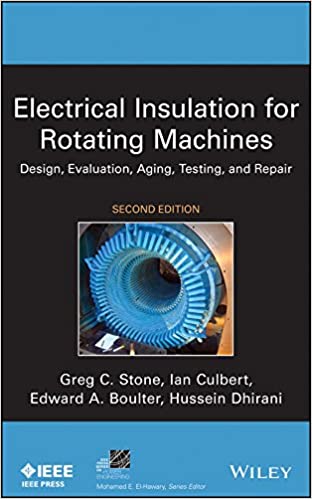
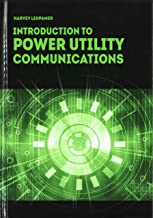
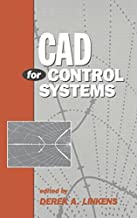
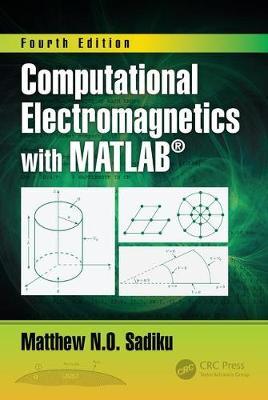
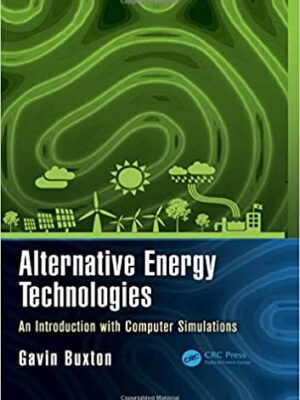
Reviews
There are no reviews yet.